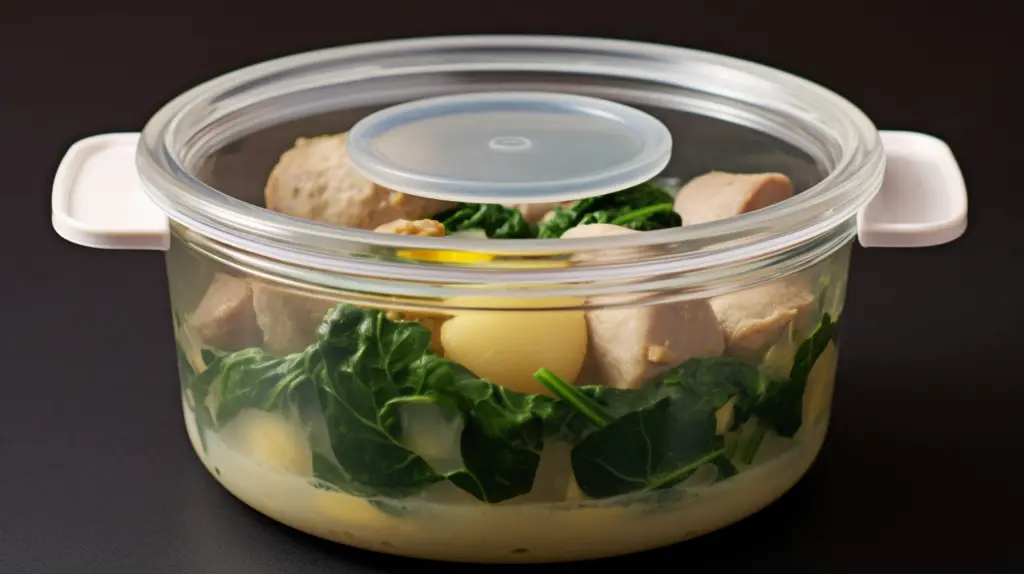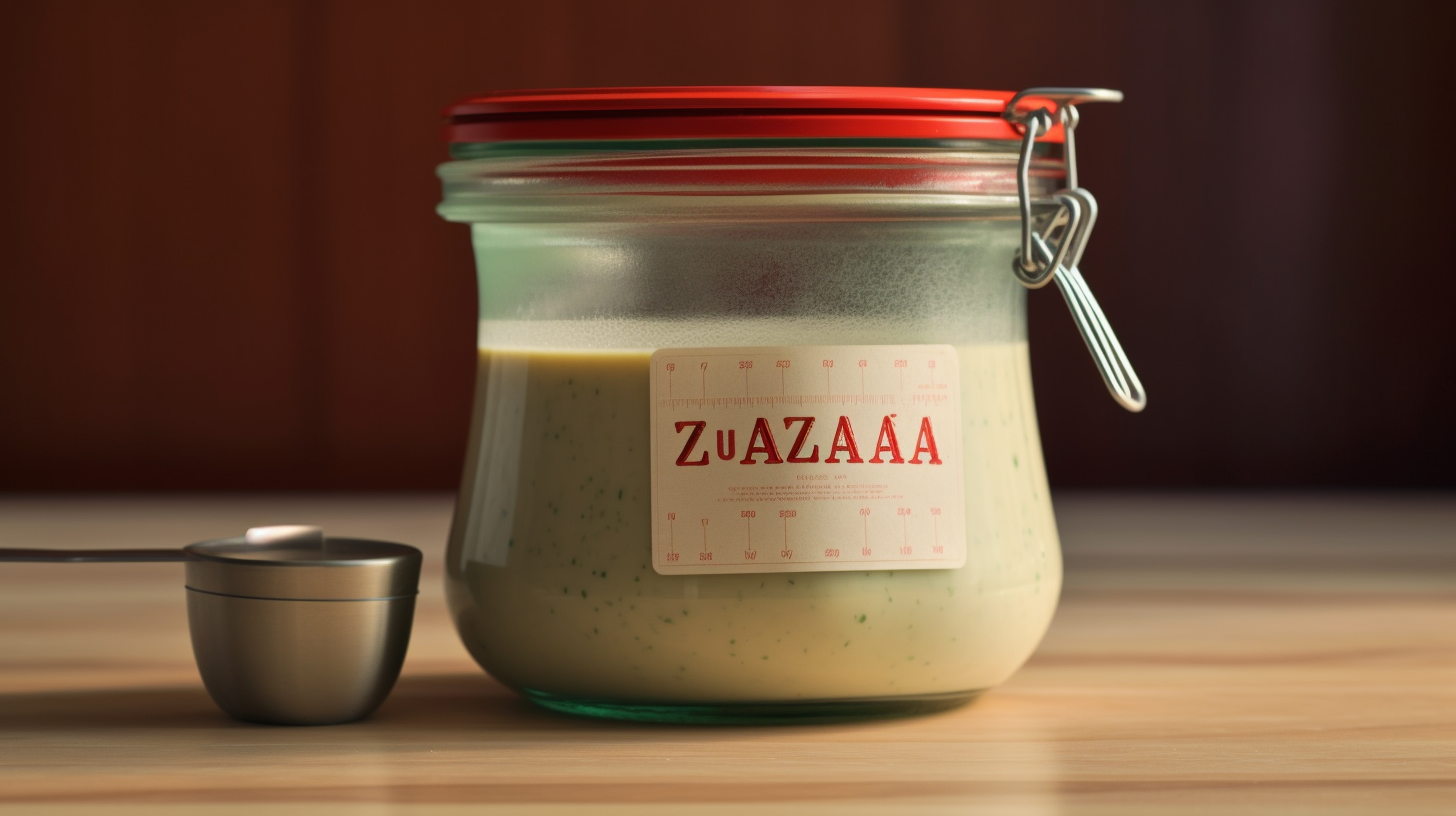Picture this: you’ve just made a big pot of delicious zuppa toscana and are feeling quite pleased with yourself. You sit down to enjoy a bowl, savoring the rich flavors of sausage, potatoes, and kale in every spoonful. But as you finish your meal, you begin to wonder – how long can I safely store this soup in the fridge?
Fear not, for we have compiled all the information you need on how long zuppa toscana lasts in the fridge. When it comes to storing soup, there are several factors at play that can affect its shelf life. Temperature, air exposure, and ingredient freshness all play a role in determining how long your zuppa toscana will stay fresh in the fridge.
As tempting as it may be to leave your soup sitting out on the counter all day (we’ve all been there), it’s important to follow proper storage guidelines to prevent spoilage and potential food-borne illness. So let’s dive into everything you need to know about properly storing and reheating your beloved zuppa toscana.
Key Takeaways
- Zuppa Toscana can be stored in the fridge for 3-4 days.
- Airtight containers made of glass or plastic are ideal for storing in the fridge.
- Freezing can extend shelf life but may affect texture and flavor when reheated.
- Prompt reheating ensures food safety and freshness.
Properly Storing Zuppa Toscana in the Fridge

To ensure optimal shelf life and maintain its quality, it is recommended to store Zuppa Toscana in an airtight container in the refrigerator for no more than three to four days. This is because storing it beyond this time frame may cause bacterial growth that could lead to foodborne illnesses.
To prevent spoilage, it’s essential to keep the soup away from direct sunlight and at a temperature below 40°F. When storing Zuppa Toscana, using the right containers can also help extend its shelf life. Airtight containers made of glass or plastic are ideal as they prevent air from coming into contact with the soup and slow down bacterial growth. Additionally, avoid transferring hot soup directly into plastic containers as they may leach harmful chemicals into the food.
It’s worth noting that while freezing Zuppa Toscana can be an option for extending its shelf life, this method may affect its texture and flavor when reheated. Therefore, it’s best to consume any leftovers within three to four days or prepare smaller portions if you do not plan on finishing it all at once.
Reheating Zuppa Toscana for optimal flavor requires careful attention since overheating can result in tough or rubbery meat and vegetables. Therefore, next we shall discuss ways of reheating this delicious soup without compromising its quality or taste.
Reheating Zuppa Toscana for Optimal Flavor

Reheating Zuppa Toscana can enhance its flavors and aromas, turning it into a delicious meal that satisfies the palate. However, improper reheating techniques can ruin the taste and texture of this soup.
The best way to reheat Zuppa Toscana is by using a stovetop or microwave. Heating this soup slowly on low heat helps to retain its flavors and prevent overcooking.
When reheating Zuppa Toscana, adding flavor-enhancing ingredients such as cream or cheese can help boost its richness and depth of flavor. However, these ingredients should be added in small quantities to avoid overpowering the soup’s original taste. Additionally, adding fresh herbs like thyme or rosemary can add a new dimension of flavor to the dish.
It is important not to let Zuppa Toscana sit at room temperature for too long before reheating it. Foodborne bacteria thrive in temperatures between 40°F and 140°F, so cooling leftovers promptly after cooking is crucial for food safety reasons. When microwaving leftover soup, ensure that it reaches an internal temperature of 165°F before consuming.
The best method for reheating Zuppa Toscana is by using a stovetop or microwave with slow heating techniques. Adding flavor-enhancing ingredients like cream or cheese in moderation can also enhance its richness and depth of taste.
After refrigeration, prompt reheating ensures food safety while maintaining optimal freshness and flavor.
Now moving onto tips for freezing zuppa toscana…
Tips for Freezing Zuppa Toscana
Proper freezing techniques are crucial for preserving the quality of Zuppa Toscana. Freezing is an excellent way to increase the shelf life of this delicious soup, but it requires specific considerations. Here are a few tips that can help you freeze your Zuppa Toscana safely and effectively.
- Best Containers
- Use airtight containers with lids to avoid freezer burn.
- Consider using freezer bags or glass jars, leaving enough space for expansion.
- Thawing Techniques
- Allow sufficient time for the soup to thaw naturally in the refrigerator.
- Never thaw at room temperature because this encourages bacterial growth.
When you have decided to freeze your Zuppa Toscana, use only high-quality containers that will keep it fresh longer. Airtight containers with lids can prevent air from coming into contact with your soup, which will reduce its quality and taste over time. You may also consider using freezer bags or glass jars as they are less likely to break when frozen and allow you to see what is inside quickly.
Thawing frozen Zuppa Toscana is another critical step in maintaining its quality after freezing. Avoid thawing at room temperature because it allows bacterial growth on the surface of the food. Instead, let it defrost slowly by transferring it from the freezer to the refrigerator 24 hours before serving. This ensures that your soup remains safe and tasty without compromising flavor or texture.
Proper storage techniques are essential when dealing with homemade soups like Zuppa Toscana. Properly storing your soup in appropriate containers and employing adequate defrosting techniques can ensure that its flavor remains unchanged even after being frozen for days or weeks.
In our next section, we’ll discuss how to safely thaw zuppa toscana without losing any nutritional value!
How to Safely Thaw Zuppa Toscana
Thawing frozen Zuppa Toscana safely is a crucial step in ensuring that the soup maintains its nutritional value and appetizing taste. There are various thawing techniques to consider, but it’s important to note that some methods can compromise the quality of the soup. The safest way to thaw frozen Zuppa Toscana is by transferring it from the freezer to the refrigerator. This method requires patience as it may take up to 24 hours for the soup to completely defrost.
Another safe method for thawing Zuppa Toscana is through cold water immersion. Place the frozen soup in a leak-proof bag and submerge it in cold water for several hours until fully defrosted. It’s essential to change the water every thirty minutes or so during this process to ensure that the temperature remains below 40℉.
Microwave thawing is not recommended as this method could potentially cook certain parts of the soup while leaving other areas still frozen. If you choose this option, make sure that you use a low power setting and frequently check on it until fully defrosted.
When thawing any food item, there are specific food safety precautions that one must take into consideration. Never leave frozen Zuppa Toscana at room temperature as this increases bacteria growth and poses health risks. Additionally, always store leftover soup in an airtight container before freezing and follow proper hygiene practices when handling any food items.
Safely thawed Zuppa Toscana can be used creatively beyond just reheating it as leftovers! One delicious option would be incorporating it into a creamy pasta dish or using it as a base for savory bread pudding. With proper care, your leftover Zuppa Toscana can add depth of flavor and richness to many meals.
Creative Ways to Use Leftover Zuppa Toscana
Utilizing leftover Zuppa Toscana in different culinary creations can add a unique depth of flavor and richness to various dishes. Here are five creative ways to use up your leftover soup:
- Zuppa Toscana Pizza: Top your favorite pizza crust with the leftover soup, mozzarella cheese, and any other toppings you desire. Bake until the crust is crispy and the cheese is melted for a delicious twist on traditional pizza.
- Creamy Pasta with Zuppa Toscana Sauce: Heat up the leftover soup and mix it with heavy cream to create a creamy pasta sauce. Pour over cooked pasta and garnish with parmesan cheese for an easy yet decadent meal.
- Zuppa Toscana Stuffed Mushrooms: Remove the stems from large portobello mushrooms and fill them with a mixture of chopped mushrooms, breadcrumbs, garlic, parmesan cheese, and the leftover soup. Bake until golden brown for a tasty appetizer or side dish.
- Zuppa Toscana Meatballs: Mix together ground pork sausage, breadcrumbs, egg, garlic powder, onion powder, salt, pepper, and the leftover soup. Form into meatballs and bake or fry until cooked through. Serve as an entree or appetizer.
- Cheesy Zuppa Toscana Dip: Combine equal parts cream cheese and sour cream with shredded mozzarella cheese and chopped kale (if desired) along with warmed-up leftovers from your zuppa toscana recipe.
These are just some examples of how you can repurpose your leftover zuppa toscana soup into exciting new dishes that will surprise your taste buds.
To ensure that you get maximum enjoyment out of these creative culinary endeavors using leftovers from your zuppa toscana recipe; however it’s important to store any remaining portions correctly in order not spoil too soon or become rancid. Therefore it is necessary that we move forward to the next section, which will cover some common mistakes people make when storing soup.
Avoiding Common Mistakes When Storing Soup
When storing soup, it is important to consider factors such as temperature, container type, and duration in order to maintain the quality and safety of the food. It is essential to store soups in airtight containers that are specifically designed for food storage. These containers not only prevent air from entering but also help preserve the flavor and texture of the soup. Additionally, using glass or plastic containers with lids that seal tightly can prevent any contamination from occurring.
Another important aspect to consider when storing soup is the shelf life of homemade soup. Generally, soups can be stored in the refrigerator for up to four days after preparation. However, this time frame may vary depending on factors such as ingredients used and cooking method employed. For example, cream-based soups tend to spoil quicker than their broth-based counterparts due to their higher fat content.
It is also essential to cool soups properly before storing them in a refrigerator or freezer. Soup should be allowed to cool down at room temperature for no more than two hours before being transferred into an airtight container. Alternatively, you may choose to place your soup into smaller containers so that it cools faster and can be stored immediately after cooling.
Avoiding common mistakes when storing soup involves considering factors such as temperature, container type and duration while keeping in mind the shelf life of homemade soup based on its ingredients and cooking method employed. By following these guidelines carefully, you can ensure that your leftover zuppa Toscana lasts longer while remaining safe and tasty for consumption later on.
Frequently Asked Questions
Can I store Zuppa Toscana in the freezer for longer than 3 months?
What are the freezing options for zuppa toscana and what is its shelf life?
When considering freezing options, it’s important to note that zuppa toscana can be frozen for up to three months while still maintaining its quality. Freezing beyond this time frame may result in a loss of flavor and texture. It’s recommended to store the soup in an airtight container or freezer bag, removing as much air as possible before sealing.
As for shelf life, it should be noted that proper storage is key when it comes to preserving food safety and quality. When stored in the refrigerator at temperatures below 40°F, zuppa toscana can last for up to four days before spoilage occurs. However, if you plan on storing the soup for longer periods of time, freezing is recommended.
Overall, proper storage techniques should always be taken into consideration when deciding how long and where to store zuppa toscana.
How many times can I reheat Zuppa Toscana before it goes bad?
Reheating tips for zuppa toscana depend on how the soup was originally stored and how many times it has been reheated.
If the soup was stored in the refrigerator, it is safe to reheat it multiple times as long as it is heated to an internal temperature of 165°F each time.
However, if the soup was stored in the freezer and has been thawed and reheated once, it should be consumed within 3-4 days of being thawed. To extend its shelf life, zuppa toscana can be frozen for up to 3 months.
When storing in the freezer, make sure to use airtight containers or freezer bags to prevent freezer burn. Always label your containers with the date that you froze them so that you can keep track of their freshness.
Following these storage options and reheating tips will ensure that your zuppa toscana stays fresh and enjoyable while also reducing food waste.
Can I add more cream to my leftover Zuppa Toscana when reheating it?
Adding cream to leftover zuppa toscana while reheating is a matter of personal preference. The soup can be reheated on the stove or in the microwave and once it has reached the desired temperature, additional cream can be added for a richer consistency.
However, it is recommended that the soup is not reheated more than twice as repeated heating and cooling can cause bacterial growth which may lead to food poisoning. Therefore, it is important to store any leftovers promptly in an airtight container in the refrigerator for no longer than 3-4 days.
It should also be noted that adding cream may change the flavor profile of the dish and some experimentation may be necessary to achieve one’s preferred taste.
Is it safe to store Zuppa Toscana in a plastic container?
When it comes to storing zuppa toscana, the choice between reusable containers and single use plastic is a matter of personal preference. However, if using plastic containers, it is important to ensure they are food grade and free from BPA or other harmful chemicals.
As for reheating zuppa toscana without compromising its flavor, the best method would be to gently heat it on the stove over low heat while stirring frequently. Avoid microwaving as this can cause the soup to become unevenly heated and result in a loss of flavor.
Adding more cream when reheating is possible, but should be done in small amounts at a time until reaching desired consistency.
Overall, properly storing and reheating zuppa toscana will help maintain its quality for longer periods of time.
Can I add vegetables to my leftover Zuppa Toscana before reheating it?
When it comes to reheating leftover zuppa toscana, adding vegetables can certainly be a viable option. However, it is important to consider which types of vegetables are best suited for this dish.
In general, hearty vegetables such as carrots, celery, and onions can work well with the soup’s rich flavors. Leafy greens like spinach or kale can also be added towards the end of cooking for some extra nutrition and texture.
That being said, it is always recommended to exercise caution when reheating leftovers in general and ensure that they are heated thoroughly before consuming. Additionally, while adding fresh ingredients may enhance the taste and nutritional value of the dish, it does not necessarily extend its shelf life beyond what is recommended for food safety purposes.
Conclusion
Proper storage and reheating methods are essential to prolong the shelf life of Zuppa Toscana. It can last up to four days in the fridge if stored properly. Freezing is also an option, but it may affect the texture and flavor of the soup.
When reheating, it’s important to use a low heat setting and stir frequently. To avoid common mistakes when storing soup, always allow it to cool before placing it in the fridge or freezer. Additionally, make sure that the container used for storage is airtight to prevent contamination and spoilage.
Properly storing Zuppa Toscana will ensure that you can enjoy this delicious soup for many meals to come. In conclusion, with proper storage techniques, Zuppa Toscana can last up to four days in the fridge and several months in the freezer. Reheating should be done slowly on low heat with frequent stirring for optimal flavor retention.
By following these guidelines, you can avoid common mistakes when storing soup and enjoy your leftover Zuppa Toscana creatively as part of other dishes or simply on its own.

